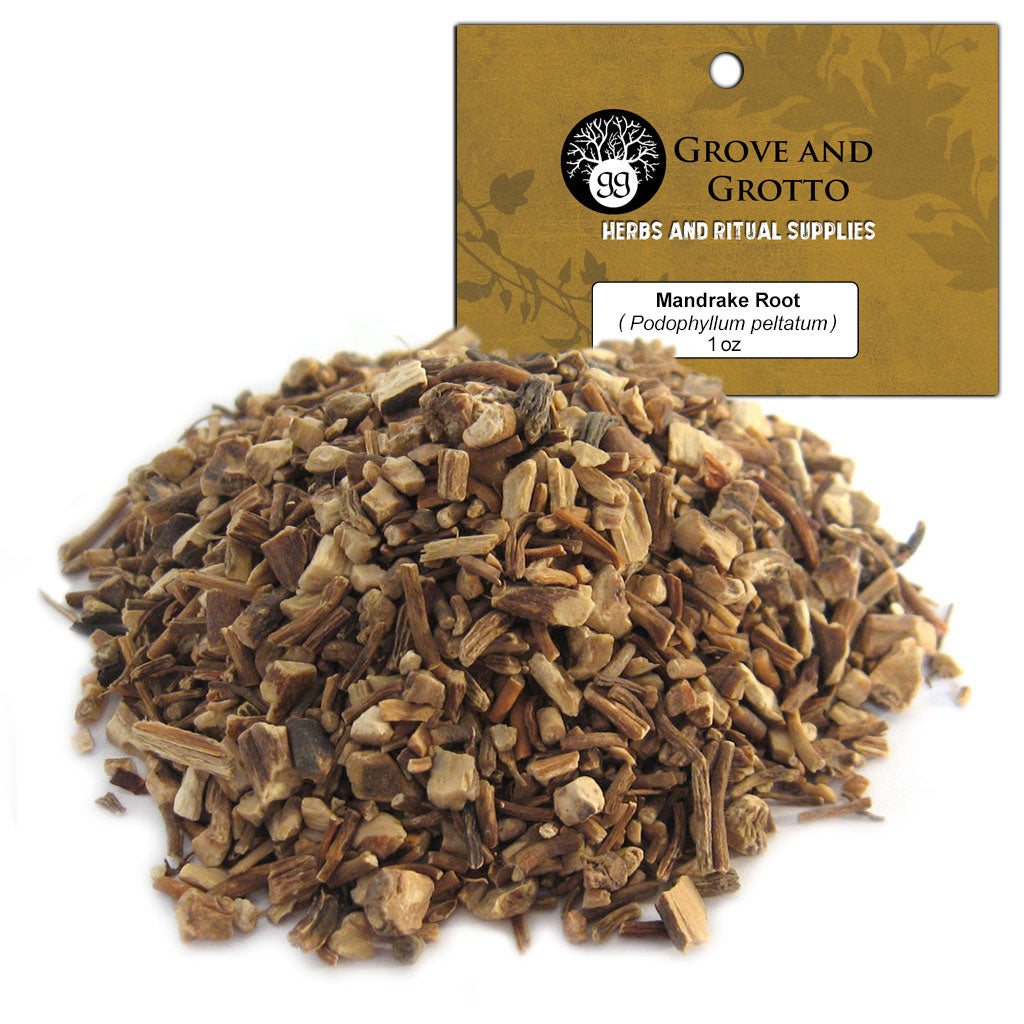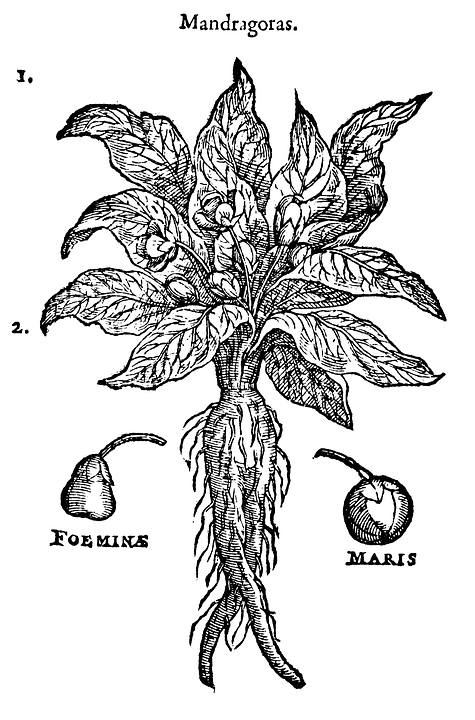

Dioscorides saith, That the male is called of divers Morion and describeth also another Mandrake by the name of Morion, which as much as can be gathered by the description, is like the male, but less in all parts: in English we call it Mandrake, Mandrage, and Mandragon. Mandrake is called of the Grecians Mandragoras, and Circæa, of Circe the witch, who by art could procure love: for it hath been thought that the root hereof serveth to win love: of some, Anthropomorphos, and Morion: some of the Latins have called it, Terræ malum, and Terrestre malum, and Canina malus: Shops, and also other Nations do receive the Greek name. They spring up with their leaves in March, and flower in the end of April: the fruit is ripe in August.

Mandrake groweth in hot regions, in woods and mountains, as in mount Garganus in Apulia, and such like places we have them only planted in gardens, and are not elsewhere to be found in England. The female Mandrake is like unto the male, saving that the leaves hereof be of a more swart or dark green colour and the fruit is long like a pear, and the other is round like an apple. But the idle drones that have little or nothing to do but eat and drink, have bestowed some of their time in carving the roots of Bryony, forming them to the shape of men & women: which falsifying practice hath confirmed the error amongst the simple and unlearned people, who have taken them upon their report to be the true Mandrakes. All which dreams and old wives' tales you shall from henceforth cast out of your books and memory knowing this, that they are all and every part of them false and most untrue: for I myself and my servants also have digged up, planted, and replanted very many, and yet never could either perceive shape of man or woman, but sometimes one straight root, sometimes two, and often six or seven branches coming from the main great root, even as nature list to bestow upon it, as to other plants.
#Mandrake roots full
Besides many fables of loving matters, too full of scurrility to set forth in print, which I forbear to speak of. They fable further and affirm, That he who would take up a plant thereof must tie a dog thereunto to pull it up, which will give a great shriek at the digging up otherwise if a man should do it, he should surely die in short space after. They add further, That it is never or very seldom to be found growing naturally but under a gallows, where the matter that hath fallen from the dead body hath given it the shape of a man and the matter of a woman, the substance of a female plant, with many other such doltish dreams. There hath been many ridiculous tales brought up of this plant, whether of old wives, or some runnagate surgeons or physic-mongers I know not, (a title bad enough for them) but sure some one or more that sought to make themselves famous and skilful above others, were the first broachers of that error I speak of.

The root is long, thick, whitish, divided many times into two or three parts resembling the legs of a man, with other parts of his body adjoining thereto, as the privy part, as it hath been reported whereas in truth it is no otherwise than in the roots of carrots, parsnips, and such like, forked or divided into two or more parts, which Nature taketh no account of.

The male Mandrake hath great broad long smooth leaves of a dark green colour, flat spread upon the ground: among which come up the flowers of a pale whitish colour, standing every one upon a single small and weak footstalk of a whitish green colour: in their places grow round apples of a yellowish colour, smooth, soft, and glittering, of a strong smell in which are contained flat and smooth seeds in fashion of a little kidney, like those of the Thorn-Apple.


 0 kommentar(er)
0 kommentar(er)
